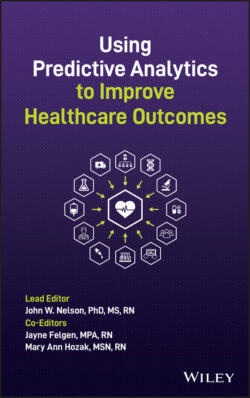Читать книгу Using Predictive Analytics to Improve Healthcare Outcomes - Группа авторов - Страница 27
Step 10: Examine Data Before Analysis
ОглавлениеOnce the data is collected, it is tempting to proceed directly to the fun part and view the results. How do things relate to one another? What are the high and low scores? Viewing the results that answer questions like these is rewarding; however, prior to viewing any results (even in Step 9, where you may have gathered together some pretty compelling retrospective data), it is critical to ensure that all the data is correct. Have the statistician, analyst, or mathematician use statistics software, or even Excel, to examine the distribution of the scores and look for indications that there is missing data. If the distribution of the data for any predictor variable has a prominent leaning toward low or high scores, with a few outliers, the analyst will need to decide whether the outliers should be removed or whether the data should be weighted. If there are patterns of missing data (e.g. one item from a construct has many missing scores), then the group should discuss why the data is missing and what to do about it. Understanding the distribution and missing data will provide additional insight into the population being studied.
Reviewing the data for accuracy can also begin to give the team a feel for the “personality” of the data.
Reviewing the data for accuracy can also begin to give the team a feel for the “personality” of the data. This data all comes from people, but instead of a coherent conversation or observation of the people contained in the data, it is initially just data. As the data is examined, an understanding of the respondents will begin to emerge.
